Prophetic Virtues in Indian Non-Muslim Thought: Perspectives of Vivekananda, Dillu Ram, and Sundar Lal
Language, as a multifaceted social element, adapts its expressions based on the contexts in which it is applied. Within India's inherent social fabric, which values acceptance and recognition, this means fostering pluralistic perspectives on religion itself. Over time, Indian non-Muslim scholars have discussed the prophetic traditions as a means to realise the true potential of this plurality. Consequently, their understanding of the characteristics of fellow religious groups and their appreciation for the elegance of prophetic teachings led them to externalise these messages through various literary and narrative forms.
Remarkable Hindu figures such as Swami Vivekananda, Pandit Sundar Lal, and Dillu Ram Kausari have engaged with the life of the Prophet. Swami Vivekananda expressed his reflections orally during spiritual gatherings held in different parts of the world. His ideals of religious plurality and respect for other faiths are evident in his insightful remarks on the prophetic life. On the other hand, Pandit Sundar Lal’s Muhammad Aur Islam is a prose biography of the Prophet, while Dillu Ram Kausari, with his poetic inclinations, conveys idealistic views through rhythmic writings.
While a comprehensive analysis of their expressions requires more extensive study, this article aims to provide an overview of their perspectives on the prophetic life, focusing on their linguistic expertise and spiritual insights. The verbal reflections of Swami Vivekananda, alongside the literary contributions of the other two scholars, are the main areas of analysis in this study.
Motives and Cultural Contexts
As previously mentioned, Indian cultural contexts serve as the primary motivation behind these scholars' reflections on the prophetic life. The nature of Hinduism allows it to absorb and interact with other religious ideas. For instance, Swami Vivekananda argues that Hinduism is the only religion capable of coexisting with every culture and thought system. With its pluralistic essence, Hinduism embraces the concept of 'acceptance' as an inherent element of its culture. In his historic speech at the Parliament of the World's Religions on 11 September 1893, Vivekananda expressed this view by stating that Hinduism teaches the world not only tolerance but also acceptance.
Additionally, the global awareness of Prophet Muhammad as a world leader, along with open-ended discussions about his life, became pivotal for these spiritual explorations. For example, Indian scholars used the term Muhammadans to describe his followers and analysed them through their customs and social interactions. This engagement was a direct result of the global exchange of ideas that marked the last few centuries.
Criticism often opens the door to deeper realisations. While this wasn't the primary approach for some Indian scholars, the prevalence of critical theories shaped how people thought and developed their perspectives. For instance, following the events of 9/11, the number of books published on Islam in America surged. Though many were disruptive, they still contributed to an increased interest in understanding the religion. Even if some individuals adhere to these critiques without question, they nonetheless create opportunities for others to discover the true aspects of the faith. Similarly, in examining Indian scholarly engagement with the prophetic life, criticism should be viewed reciprocally as an inspiring factor behind their writings.
Vivekananda’s Verbal Expressions
Swami Vivekananda, born in the late 19th century, is credited with establishing Hinduism as a major world religion. He was deeply interested in philosophy and theology, and his interest grew as he introduced the Vedic-based Vedanta teachings into the practice of Yoga. He also referred extensively to Western scholars such as Immanuel Kant and Herbert Spencer. His rise as a spiritual leader within Hinduism was largely influenced by his encounter with Ramakrishna Paramahamsa.
Vivekananda’s reflections on Prophet Muhammad often centered on the Prophet's spiritual leadership. Educated in English, Vivekananda addressed Hindus around the world, drawing on not only Hindu spirituality but also the teachings of other faiths. He regarded the Prophet as a great leader of equality and justice, as demonstrated in his statement:
"Mohammed by his life showed that amongst Mohammedans there should be perfect equality and brotherhood. There was no question of race, caste, creed, colour, or sex. The Sultan of Turkey may buy a Negro from the mart of Africa, and bring him in chains to Turkey; but should he become a Mohammedan and have sufficient merit and abilities, he might even marry the daughter of the Sultan. Compare this with the way in which the Negroes and the American Indians are treated in this country! And what do Hindus do? If one of your missionaries happens to touch the food of an orthodox person, he would throw it away. Notwithstanding our grand philosophy, you note our weakness in practice; but there you see the greatness of the Mohammedan beyond other races, showing itself in equality—perfect equality regardless of race or colour."
Vivekananda's use of the term “perfect equality” highlights the significance he placed on the Prophet's teachings, which he saw as superior to other messages of social justice. In a society shaped by tribal conflicts, the Prophet united people through religious inspiration, forging emotional bonds. Vivekananda not only recognised this “perfect equality” but also critiqued his own people for practising inequality. This reveals his reformist stance and how he leveraged the ideals of great personalities to promote social reform.
In addition to embracing the equality spread by the Prophet, Vivekananda also defended Islam against those who harboured misconceptions, stating:
"Mohammed—the Messenger of equality. You ask, 'What good can there be in his religion?' If there was no good, how could it live? The good alone lives, that alone survives. Mohammed was the Prophet of equality, of the brotherhood of man, the brotherhood of all Mussalmans."
Despite his own religious identity, Vivekananda rejected the notion that the Prophet's ideas were troublesome. He offered a rational argument: “How can a religion with no equality influence millions of minds and persist for centuries?” He proposed that by promoting equality among Muslims, the Prophet had advanced equality for all of humanity. The language Vivekananda used was argumentative, as he first questioned the critics and then provided a reasoned response.
What impressed me most about Vivekananda, however, was his view on the interconnectedness of religions. Moving away from fundamentalist arguments about Hinduism, he asserted that all religions are reminders of one another. His speeches to thousands of Hindu devotees around the world highlighted the pluralistic nature of Hinduism and the ways in which morality can be derived from other ideologies. This made him a great reformist, even though he passed away at a young age. He firmly stated:
"I am firmly persuaded that without the help of practical Islam, theories of Vedantism, however fine and wonderful they may be, are entirely valueless to the vast mass of mankind."
Although this statement might seem overly inclusive, Vivekananda’s language of religious plurality is what set him apart from others.
Spirituality and Poetry
Throughout human history, poetry has been a vital medium for expressing thoughts and emotions. Dillu Ram Kausari, a devotee of Bishnoi Hinduism from Haryana, was a traditional Urdu poet who dedicated his life to writing Naats (eulogies in praise of Prophet Muhammad). His emotional verses often reflect an acknowledgement of the Prophet in terms of spirituality and mysticism. He authored two collections of poems, Hindu ki Naat and Aab-e-Hayat, where he conveyed his mystical connection to the Prophet. Although his poems did not focus on historical events, they were frequently recited to praise the Prophet and evoke his memory.
In the preface to Hindu ki Naat, Khwaja Hassan Nizami affirmed the authenticity of the work, stating that not a single line was added beyond Dillu Ram's original verses. He also mentioned that poetry was equally cherished by both Muslim and Hindu communities.
The key themes expressed in Dillu Ram’s poetry include complete devotion, a love that transcends material existence, and the concept of spiritual liberation. Dillu Ram asserts that the prophetic power to liberate the inner soul became a reality within himself. Moreover, he expresses the rejection of loneliness through the presence of the Prophet, as reflected in a line from Aab-e-Hayat:
"Kausari is not alone, he is with the Prophet.
The one who is with the Prophet is in a blessing."
This attachment to the Prophet expressed throughout his eulogies, calls for immediate recognition of his writings as bold expressions of love. Neither societal expectations, which often stifle personal expression, nor religious concerns deterred him from diving into this ocean of love.
It is clear from his verses that Dillu Ram was familiar with Qur'anic references to the Prophet and other religious concepts. For instance, he places Medina at the heart of his praise for the Prophet and calls him Rahmat lil 'Alameen (Mercy to the Worlds), a title drawn from a Qur'anic verse that extols the Prophet. This connection suggests that Dillu Ram engaged with Islamic scholars and was influenced by his Muslim surroundings.
However, considering the societal tendency to critique anything connected to religion, particularly in the context of active religious engagement, Dillu Ram may have faced criticism for his unrestrained praise of the Prophet. In Islamic theology, attributing divine qualities to a human is discouraged. This raises the question of whether it is appropriate to excessively praise the Prophet. From one perspective, this concern might seem offensive, as poetry is often an uncontrollable outpouring of the inner self. Nonetheless, these verses are sincere expressions of love, not subject to restraint.
Moreover, given the political circumstances of his time, Dillu Ram’s poems carry significant weight. He wrote during a period when British colonial powers were fostering communal division. Khwaja Hassan Nizami emphasised in his introduction to Hindu ki Naat that Dillu Ram’s poems reflect the pro-Islamic sentiments of Indian common society. In discussing communalism in India—a nation with a rich heritage of acceptance—figures like Dillu Ram are often overlooked, which ultimately undermines India’s rich cultural legacy.
Sundar Lal’s Historical Views
Sundar Lal's work Muhammad aur Islam is a unique acknowledgement of the relevance of the prophetic traditions and his faith. Written in Urdu and part of prose literature, the book traces the history of the Islamic faith and highlights significant events in the life of the Prophet, emphasising the importance of his message. Sundar Lal’s work is a notable example of an unbiased approach to Islamic history by a non-Muslim.
In the first two chapters, Sundar Lal describes Arabian social structures to provide context for the arrival of Islam. He notes that pre-Islamic Arabian culture was diverse and influenced by various beliefs. The religious ideas of Zoroastrianism, Judaism, and Christianity were prevalent in Arabia, as the region was home to many foreign settlements. Idol worship was deeply ingrained in Arabian society, and household idols were venerated with strange customs and practices.
Throughout his accounts of the Prophet’s life, Sundar Lal refers to him as Muhammad sahib, meaning "friend." This choice reflects the respect Sundar Lal, as a non-Muslim, extended to the Prophet of another religion. This tone of reverence is consistent throughout his writing, right up to his final mentions of the Prophet’s life.
In his historical descriptions, Sundar Lal also sheds light on the political events and social conditions of the time. He discusses the Greek influences on the people of the Levant and the surrounding areas to provide a clear context for the Prophet’s life. According to Sundar Lal, the Prophet was disturbed by the political misfortunes facing his society and worked tirelessly to unite the people, providing them with social and political security.
The prophetic virtues and life lessons are vividly detailed in the book, conveyed with an emotional depth that reflects Sundar Lal’s attachment to the Prophet's story. He recounts the hardships the Prophet faced while spreading Islam, his migration to Medina and the challenges of warfare. Sundar Lal also acknowledges that Islam is not a religion of terror, highlighting its principles of inclusivity and religious freedom. To support this, he references Qur'anic verses.
In conclusion, Sundar Lal’s narration of the Prophet’s life is exemplary. Although his work Muhammad aur Islam is not formalised, it can be regarded as an established example of dialogue between civilisations. The respect with which he portrays the Prophet and the virtues he emphasises are especially relevant in a world where understanding the truths of other faiths is often restricted.
Conclusion
Indian non-Muslim engagement with the life of the Prophet Muhammad is rooted in a sense of inclusivity and acceptance inherited from the country's social dynamics. To represent the breadth of these interactions, this study has referred to three prominent non-Muslim figures, each reflecting a distinct mode of expression. Vivekananda, with his deep philosophical insights, focused on equality as a core virtue exemplified by the Prophet. Dillu Ram’s poetry, deeply spiritual and rhetorical, transcended material concerns in its profound devotion and love for the Prophet. Lastly, as discussed in the third section of this article, Sundar Lal’s prose reflected a meaningful engagement with the Prophet’s life, emphasising historical and spiritual fortune.
About the author :
Sahal Zakriya is a third-year student pursuing his degree at Darul Huda Islamic University (DHIU), specializing in the Department of Aqidah and Philosophy. Originally from Kannur district in Kerala.
Bibliography
Kausari, D. R. (2012). Aabe Kausar. Ishna Ashra Publication. https://archive.org/details/in.ernet.dli.2015.375895
Lal, S. (1941). Hazrat Muhammad aur Islam. Vishwani Publications. https://archive.org/details/dli.ernet.450574/page/n1/mode/2up
Tharoor, S. (2018). Why I am a Hindu. Aleph Book Company.
Tufail, M. R., & Saleemi, M. A. (2017). Chaudhary Dillu Ram ki naatiya shi'ri. Noor-e-Haqeeqat, 1(2). https://ojs.lgu.edu.pk/index.php/nooretahqeeq/article/view/381/332
Vivekananda, S. (1947). The complete works of Swami Vivekananda. Advaita Ashrama. https://archive.org/details/in.ernet.dli.2015.46169
Disclaimer
The views expressed in this article are the author’s own and do not necessarily mirror Islamonweb’s editorial stance.

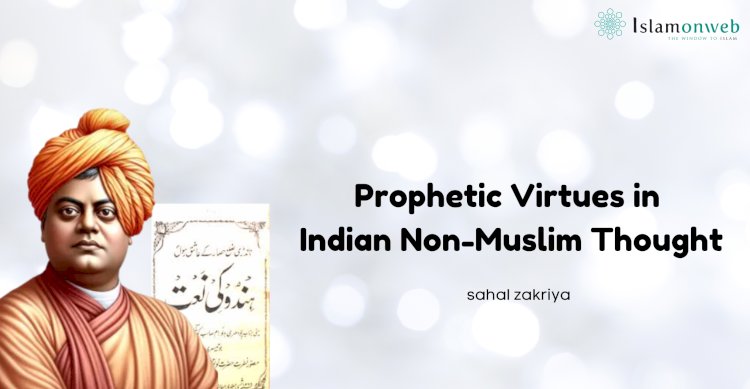


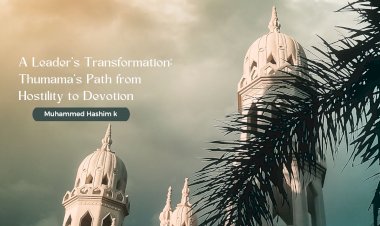
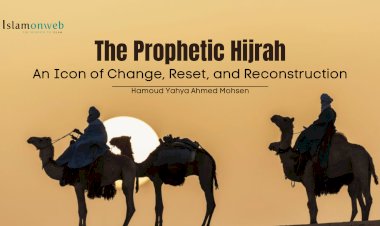
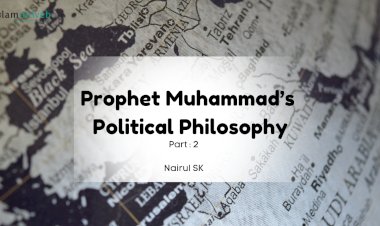
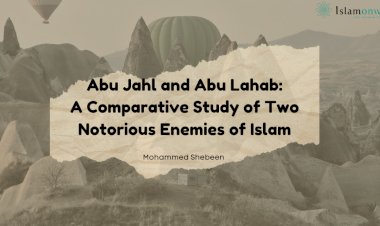
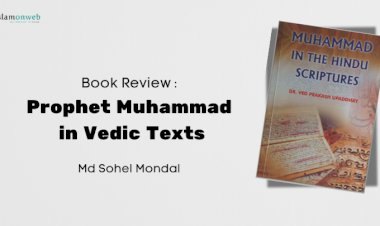















Leave A Comment